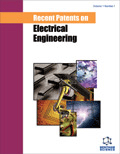Abstract
The common mode inductors, or common mode chokes, are a key component of electromagnetic interference filters. Engineers usually face significant design challenges such as size, cost and weight while working with these components. To avoid the construction of several prototypes, often oversized, engineers need an analytical method to predict performances of the filter. The analysis of the common mode inductors starts with a presentation of the different ferromagnetic materials: their properties are the cornerstone of the design of the component. Based on this study, the impedances used to characterize the choke are related to the designable parameters. The derived model shows the role of the parasitic currents to ground and the common mode impedance in the overall common mode current attenuation. A certain attenuation of differential mode current is also to be expected due to the parasitic currents of the common mode choke itself: the turn to turn capacitance and the leakage inductance. This model is validated by measurements. Sensitivity studies provide an additional insight into the behavior of the choke by giving an understanding on how variations of parameters, influence the final performance. The deviation calculation and the influence of the designable parameters are addressed at the end of this chapter.
Keywords: Capacitive coupling, Common mode current, Core material, Curie temperature, Differential mode current, Electromagnetic interference (EMI), Equivalent circuit, Ferromagnetic material, Ferromagnetism, Flux, Ferrite, Filter, Hysteresis loop, Heat, Inductance, Impedance, Iron, Modification factors, Metal alloys, Noise source, Nanocrystalline, Noise spectrum, Powder material, Permeability, Power converter, Radiated electric field, Saturation level, Sensitivity




















